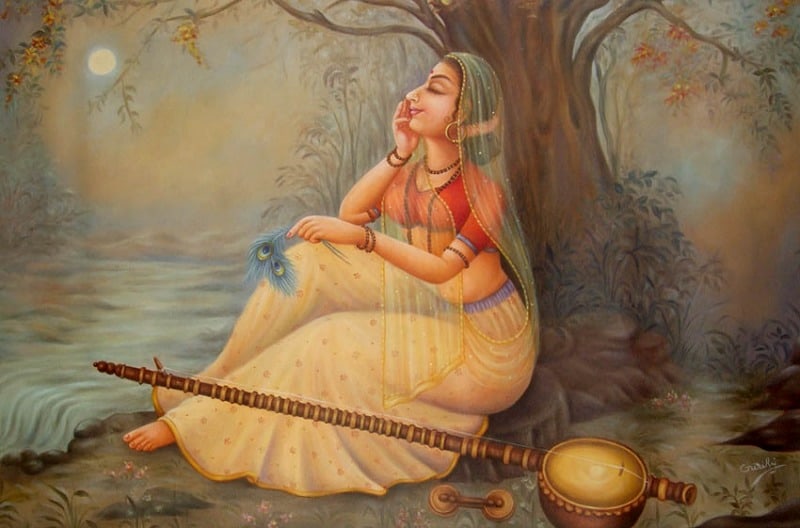MIRABAI
Mirabai, also known as Meera Bai, was a 16th-century Indian mystic poet and devotee of Lord Krishna. She was born into a royal family in Rajasthan but became renowned for her unwavering devotion to Krishna, which often transcended societal norms and conventions of her time. Mirabai expressed her love and devotion to Krishna through her soulful poetry and devotional songs, known as bhajans.
Her verses spoke of love, longing, and the spiritual union with the divine. Mirabai's devotion to Krishna was seen as radical and unconventional, especially given her royal background, yet her unwavering faith and devotion made her an enduring figure in Indian spirituality.
Mirabai's life and works continue to inspire people, emphasizing the universal nature of love and devotion beyond societal boundaries. Her legacy remains celebrated through her poetry and the cultural significance of her devotion to Lord Krishna.

3. Mirabai literature
Mirabai's literature primarily consists of her devotional poems and songs, known as bhajans, which were composed in the Braj Bhasha and Rajasthani languages. These compositions are revered for their deep spiritual content and emotional intensity, expressing her love and devotion to Lord Krishna.
Her bhajans reflect various themes such as:
Bhakti (Devotion): Mirabai's unwavering devotion to Lord Krishna is the central theme of her compositions. Her poems often depict her longing for union with the divine and her deep love for Krishna.
Spiritual Journey: Mirabai's verses often describe her spiritual journey, portraying the challenges she faced in her devotion and her ultimate reliance on Krishna as her sole refuge.
Society and Conventions: She also addressed societal norms and the challenges she encountered due to her radical devotion. Her refusal to conform to social expectations, especially as a royal woman, is a recurring theme in her works.
Love and Surrender: Her poetry beautifully articulates the themes of love, surrender, and the yearning for a profound spiritual connection with the divine.
- It emphasized the significance of personal devotion and love towards a chosen deity or the divine, placing greater importance on this emotional connection rather than ritualistic practices or strict adherence to caste-based norms
- The movement transcended social barriers like caste, gender, and religion. It encouraged inclusivity, welcoming people from all walks of life to participate in devotional practices.
- Bhakti found expression in various forms, including devotional poetry, music, dance, and art. Bhakti saints and poets composed verses and songs expressing their intense love and devotion to their chosen deity, which resonated with the common people
- Various saints and mystics across India contributed to the Bhakti movement. Some well-known figures include Ramanuja, Mirabai, Kabir, Chaitanya Mahaprabhu, Tulsidas, and Tukaram, among others. Each had a unique way of expressing devotion and contributed significantly to the movement
- The Bhakti movement manifested differently in various regions of India, adopting different languages, cultural practices, and interpretations while maintaining the core principles of devotion and inclusivity
|
Previous Year Questions
1.With reference to the religious history of medieval India, the Sufi mystics were known to pursue which of the following practices? (UPSC CSE 2012) 1. Meditation and control of breath 2. Severe ascetic exercises in a lonely place 3. Recitation of holy songs to arouse a state of ecstasy in their audience Select the correct answer using the codes given below: A.1 and 2 only B.2 and 3 only C.3 only D.1, 2 and 3 Answer (D) 1.Evaluate the nature of the Bhakti Literature and its contribution to Indian culture. (UPSC CSE 2021 GS I) 2. The Bhakti movement received a remarkable re-orientation with the advent of Sri Chaitanya Mahaprabhu. Discuss. (UPSC CSE 2018 GS I) |




